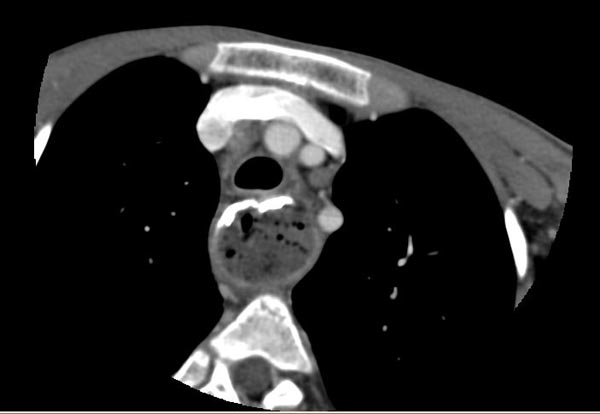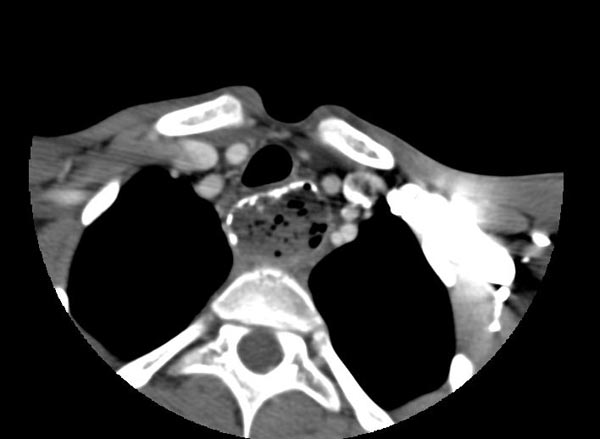Difficulty swallowing, medically referred to as dysphagia, is a condition that can significantly impact an individual’s quality of life. One specific form of this condition is Achalasia, often abbreviated as AC. This article provides a comprehensive overview of achalasia, delving into its causes, symptoms, diagnostic methods, and available treatments.

What is Achalasia?
Achalasia is a rare disorder that affects the esophagus, the muscular tube responsible for carrying food from the throat to the stomach. In individuals with this condition, the muscles of the lower esophageal sphincter fail to relax properly, making it difficult for food and liquids to pass into the stomach. As a result, patients experience difficulty swallowing, regurgitation of undigested food, chest pain, and even weight loss.
Symptoms of Achalasia
- Difficulty Swallowing: Patients often report trouble swallowing both solids and liquids, which tends to worsen over time.
- Regurgitation: Undigested food may come back up, sometimes even hours after eating.
- Chest Pain: Some individuals experience chest pain that can mimic heart-related issues.
- Weight Loss: Difficulty in consuming adequate nutrition can lead to unintended weight loss.
- Coughing: Regurgitated food or liquid can enter the airways, leading to coughing or aspiration pneumonia.
Causes of Achalasia
The exact cause of achalasia remains unknown, but researchers believe it involves a combination of genetic and autoimmune factors. Here are some potential contributing factors:
Autoimmune Response
Some studies suggest that achalasia may occur due to an autoimmune response where the body’s immune system mistakenly attacks the nerve cells within the esophagus. This attack damages the nerves responsible for signaling the muscles to relax, leading to the characteristic symptoms of achalasia.
Genetic Factors
Although achalasia is not typically inherited, there may be a genetic predisposition in some cases. Individuals with a family history of the condition may have a higher risk of developing it themselves.
Infections
Certain viral infections have been linked to the development of achalasia. For example, some researchers hypothesize that infections such as herpes simplex virus or measles could trigger the onset of the condition in susceptible individuals.
Neurological Degeneration
Achalasia might also arise from the degeneration of certain nerve cells in the esophagus. The loss of these nerve cells disrupts normal muscle function, preventing the esophagus from moving food effectively toward the stomach.
Diagnosing Achalasia
Diagnosing achalasia requires a thorough evaluation by a healthcare professional. Several tests and procedures are used to confirm the presence of the condition and rule out other possible causes of swallowing difficulties.
Medical History and Physical Examination
The first step in diagnosing achalasia involves taking a detailed medical history and performing a physical examination. Doctors will ask about the patient’s symptoms, their duration, and any factors that worsen or alleviate them. A physical exam may reveal signs such as weight loss or malnutrition.
Barium Swallow Test
This imaging test involves the patient swallowing a liquid containing barium, a substance that shows up clearly on X-rays. As the patient swallows, X-ray images are taken to observe the movement of the barium through the esophagus. In individuals with achalasia, the esophagus may appear dilated, and the lower esophageal sphincter may fail to open properly.
Esophageal Manometry
Esophageal manometry is considered the gold standard for diagnosing achalasia. During this procedure, a thin tube equipped with pressure sensors is inserted through the nose and into the esophagus. The sensors measure the strength and coordination of esophageal muscle contractions as well as the relaxation of the lower esophageal sphincter. Abnormal results indicating poor muscle function and lack of sphincter relaxation confirm the diagnosis.
Endoscopy
An endoscopy involves inserting a flexible tube with a camera into the esophagus to examine its lining. While this procedure does not directly diagnose achalasia, it helps rule out other conditions such as cancer or strictures that could mimic the symptoms of achalasia.
Treatments for Achalasia
While there is no cure for achalasia, several treatment options aim to relieve symptoms and improve the patient’s ability to swallow. The choice of treatment depends on the severity of the condition, the patient’s overall health, and personal preferences.
Lifestyle Modifications
Making dietary and lifestyle changes can help manage mild cases of achalasia. These modifications include:
- Eating smaller, more frequent meals
- Chewing food thoroughly before swallowing
- Avoiding carbonated beverages and alcohol
- Sleeping with the head elevated to prevent nighttime regurgitation
Medications
Medications such as calcium channel blockers and nitrates may be prescribed to relax the lower esophageal sphincter temporarily. However, these drugs often provide only limited relief and are generally used as short-term solutions.
Pneumatic Dilation
Pneumatic dilation is a minimally invasive procedure in which a balloon is inserted into the esophagus and inflated to stretch the lower esophageal sphincter. This procedure aims to weaken the sphincter muscles, allowing food to pass more easily into the stomach. Pneumatic dilation is effective for many patients but may need to be repeated if symptoms return.
Botox Injections
Botulinum toxin injections can be administered directly into the lower esophageal sphincter during an endoscopy. The toxin paralyzes the sphincter muscles, enabling them to relax and allowing food to pass. While Botox injections offer temporary relief, their effects typically last only a few months, necessitating repeat treatments.
Heller Myotomy
Heller myotomy is a surgical procedure in which the muscles of the lower esophageal sphincter are cut to allow food to pass more easily. This surgery is often performed laparoscopically, resulting in minimal scarring and quicker recovery times. Heller myotomy is highly effective but may be combined with a partial fundoplication to reduce the risk of acid reflux.
Peroral Endoscopic Myotomy (POEM)
Peroral endoscopic myotomy is a newer, less invasive alternative to traditional surgery. During this procedure, an endoscope is inserted through the mouth, and the muscles of the lower esophageal sphincter are cut from the inside. POEM has shown promising results with fewer complications compared to other surgical options.
Living with Achalasia
Managing achalasia requires ongoing care and collaboration between patients and healthcare providers. Regular follow-ups are essential to monitor the effectiveness of treatment and make adjustments as needed. Additionally, support groups and counseling can provide emotional support and practical advice for coping with the challenges of living with this condition.
Dietary Considerations
Patients with achalasia should focus on consuming soft, easy-to-swallow foods while avoiding tough meats, raw vegetables, and dry bread. Liquids and semi-solid foods like smoothies and soups can also be beneficial. Working with a dietitian can help ensure adequate nutrition despite dietary restrictions.
Monitoring for Complications
Individuals with achalasia are at increased risk of complications such as aspiration pneumonia and esophageal cancer. Regular screenings and prompt attention to new or worsening symptoms are crucial for early detection and management of these potential issues.





